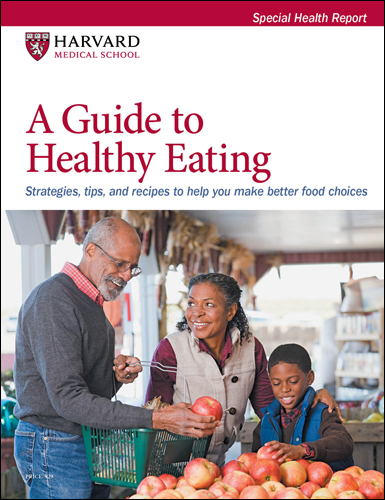Fruit of the month: Pomegranate

Pomegranates are packed with hundreds of edible ruby-red seeds called arils that have a sweet, tart flavor. They’re also full of nutrients that benefit the heart, especially antioxidants that help quell inflammation. In fact, pomegranate juice contains three times the antioxidant activity of red wine or green tea. Studies suggest the juice may help lower levels of harmful LDL cholesterol and reduce blood pressure.
But as is true for all fruits, you’re better off consuming the fruit itself (so you eat the fiber-rich seeds) rather than drinking juice. A half-cup of pomegranate arils contains just 72 calories.
Pomegranates are in season from October to January. Here’s an easy way to get the seeds out: Cut the pomegranate in half and score the outside of each half four times, barely cutting through the rind. Hold the cut side of one half loosely in your hand, facing down, over a large, wide bowl. Whack the rind with a large spoon and the seeds should fall out through your fingers into the bowl. The seeds add a pretty pop of color to all types of salads (grain, green, or fruit), or you can sprinkle them on cereal or yogurt.
Image: © pjohnson1/Getty ImagesAbout the Author

Julie Corliss, Executive Editor, Harvard Heart Letter
Disclaimer:
As a service to our readers, Harvard Health Publishing provides access to our library of archived content. Please note the date of last review or update on all articles.
No content on this site, regardless of date, should ever be used as a substitute for direct medical advice from your doctor or other qualified clinician.













